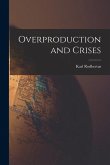The book looks at some of the recent past most severe debt, currency and financial crises experienced by a number of countries and regions that received huge capital inflows and accumulated large amounts of external debts. These include the crises experienced by Latin American countries in the 1980s, Mexico in 1982-1983 and again in 1994-1995, African countries in the 1980s and 1990s, Thailand and Indonesia in 1997-1998 and the persistent Greek debt crisis. The book then compares these crises with the potential risk for (and perhaps inevitable) new debt, currency and financial crises in many African countries such as Kenya, following the recent strong capital inflows into and excessive external debt accumulation by African countries during the current extended period of historical low and sometime negative global interest rates and bond yields. In all the episodes and waves of capital flows and excessive external debt accumulation and the resulting debt, currency and financial crises; the pattern has been the same. Interest rates and bond yields in developed countries are sharply cut and fall to historical lows for an extended period of time due to deep economic recessions in developed countries. International investors and lenders seeking higher returns and yields flood developing countries with capital and foreign loans. Developing countries are eager to accumulate excessive external debts. The easily accessible and relatively cheap external debt is used to finance some infrastructure projects, increasing recurrent expenditure, imports, consumption and large current account deficits while a large part of the borrowed funds are also wasted and looted. Their economies experience strong growth and assets prices boom during the debt accumulation and capital inflow cycle. Everybody, including the lenders argue "this time is different" and there will be no debt repayment problems. Interest rates in developed countries are then increased to control rising inflation. International investors and lenders flee from developing countries and move their money back to now higher yields, lower risk and safer markets in developed countries. As capital flows reverse and foreign credit is cut off, these countries are unable to repay the excessive accumulated external debts and are thrown into debt, currency and financial crises. The countries are forced to seek bailout loans from international financial institutions under very painful austerity measures that bring a lot of suffering to the people. It is finally recognized that most of the countries are insolvent and they can never fully repay the excessive accumulated debt and part of the debt is written off, with lenders and investors taking large haircuts on the debts but this is only done after a lot of suffering has been inflicted on the people. The book has reviewed the capital flows and external debt accumulation by African countries in the current cycle in general and covered Kenya that could represent the situations in many other African countries in more details. The borrowing governments that are currently in office are getting cheap funds from reckless lenders and investor to spend now with current benefits and without much worry on how the debts will be repaid by future governments and generations in 10 to 30 years when they will probably not be in office and seems ignorant or not bothered of the future risks that they are putting their countries into. Because they know that the responsibility of repaying the external debts will fall on future governments while they are getting the benefits of spending the borrowed money now, current governments may not have the incentives to take the necessary required precautions when incurring the excessive debts . This is also partly because every time, the orgy of excessive lending and borrowing is being done by a new crop or generation of lenders and borrowers with no respect for history's lessons but only near and short term gains and glory
Hinweis: Dieser Artikel kann nur an eine deutsche Lieferadresse ausgeliefert werden.
Hinweis: Dieser Artikel kann nur an eine deutsche Lieferadresse ausgeliefert werden.








